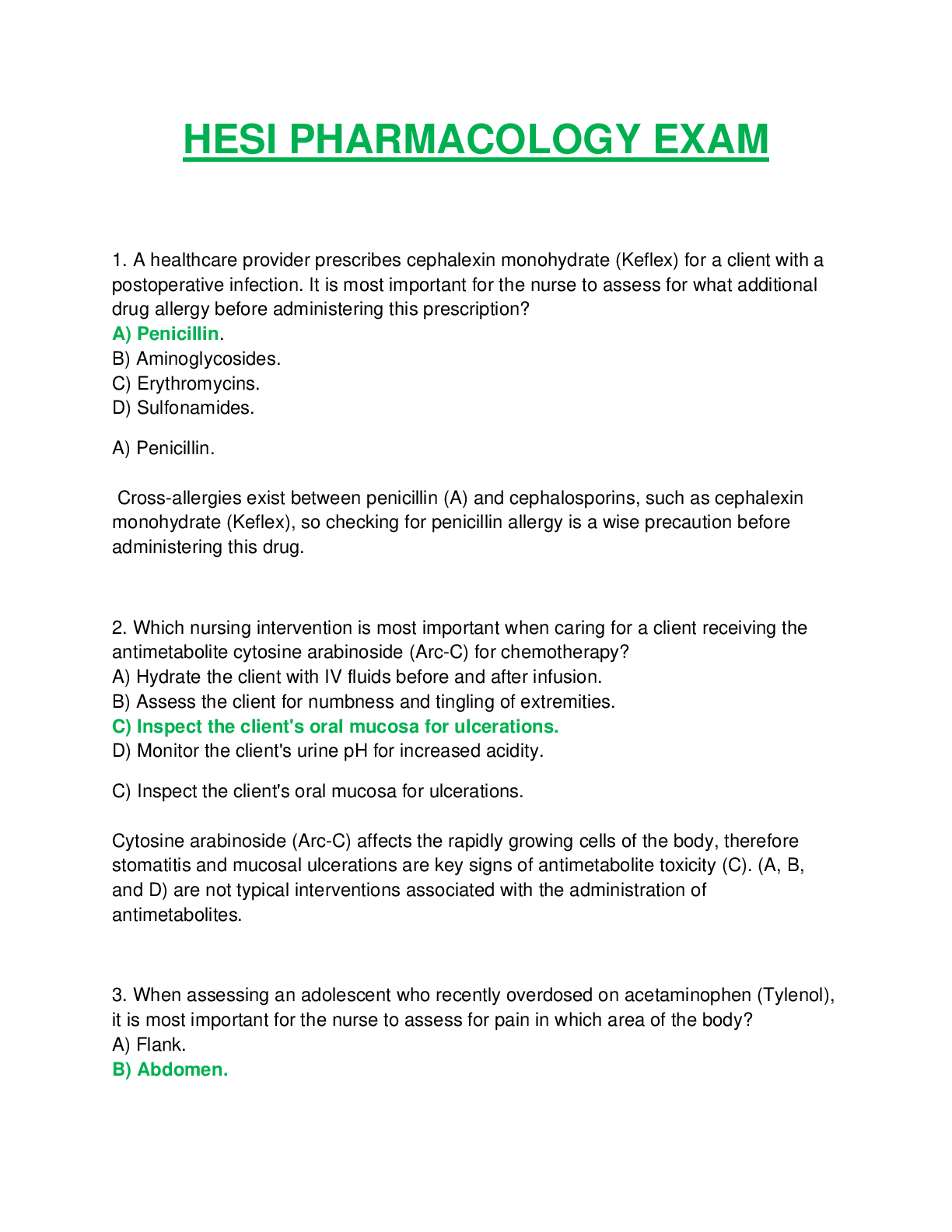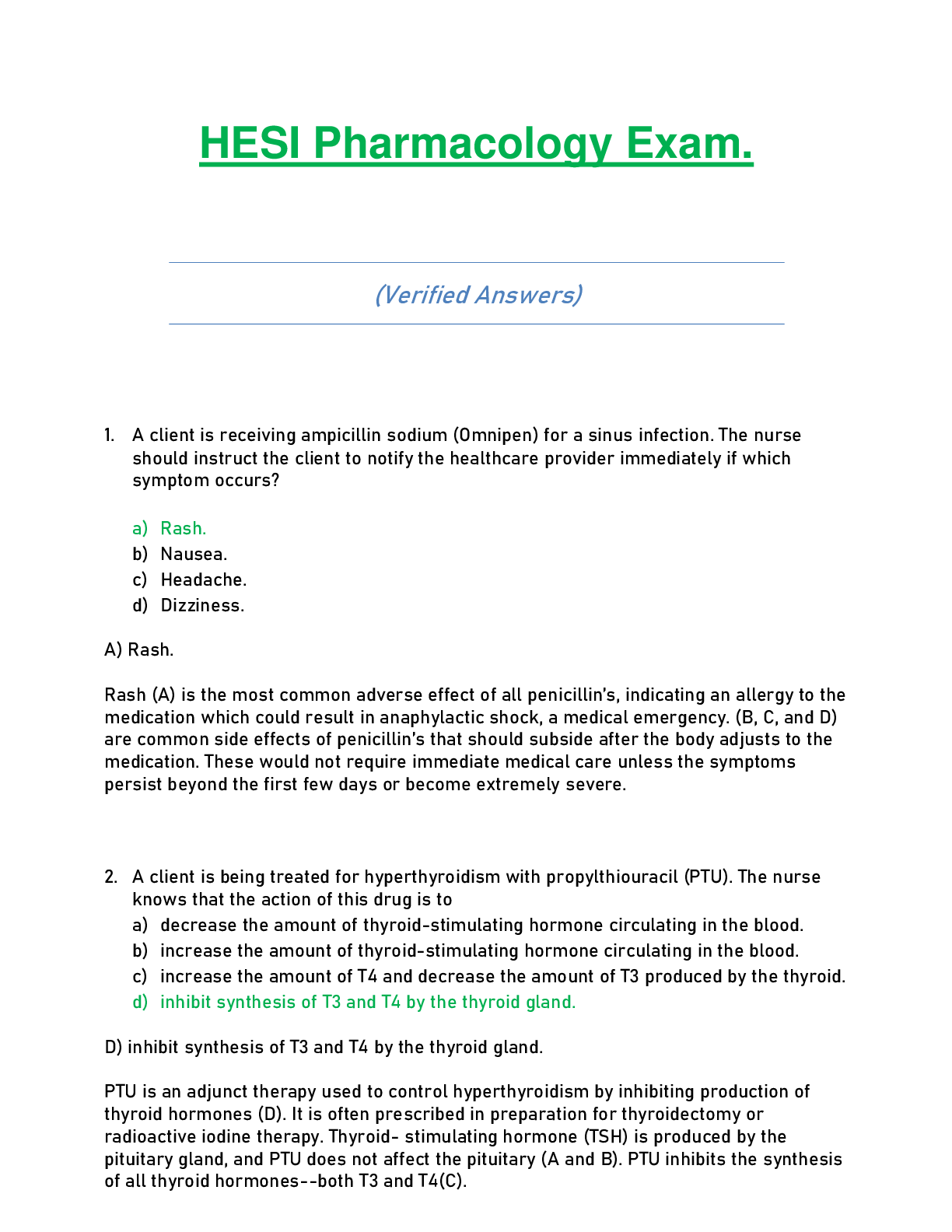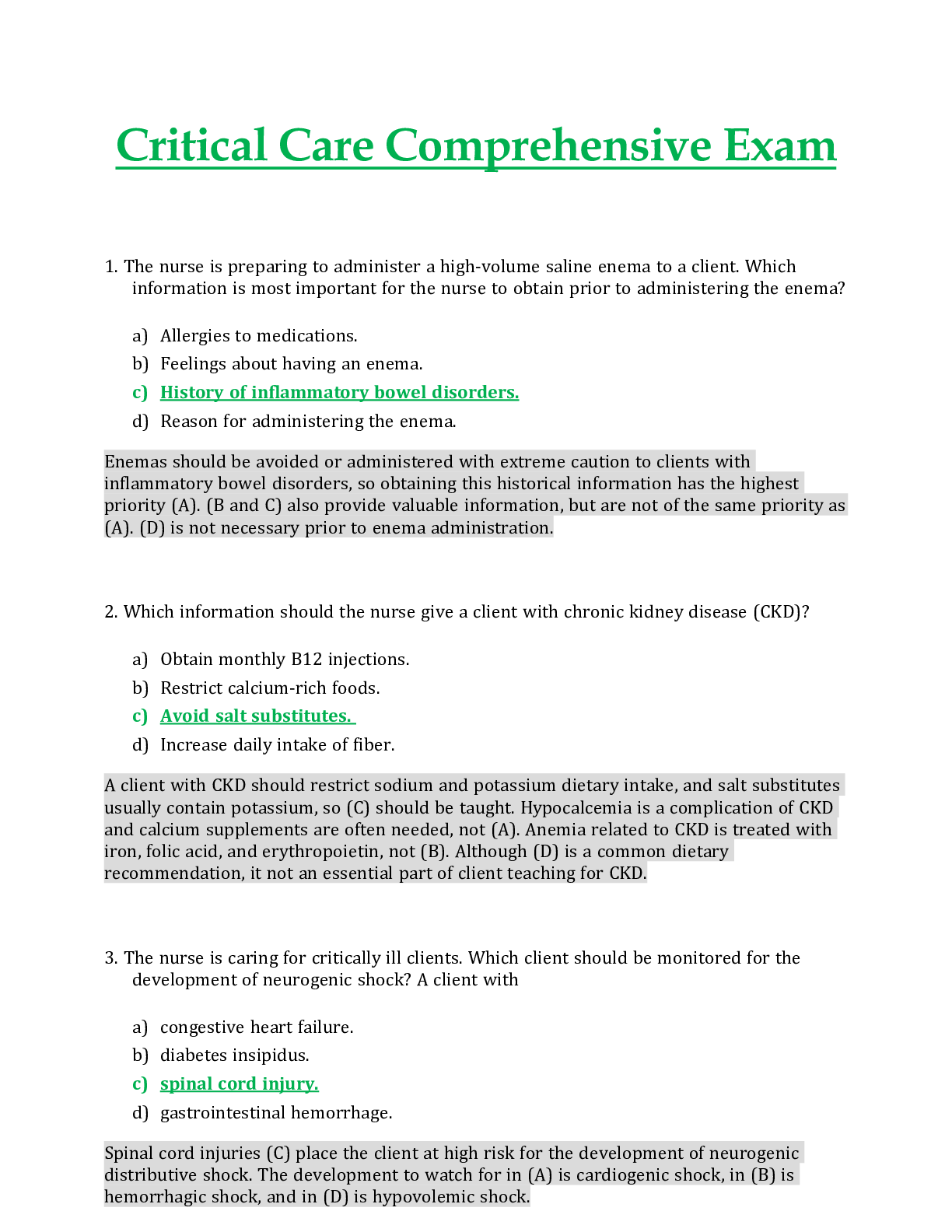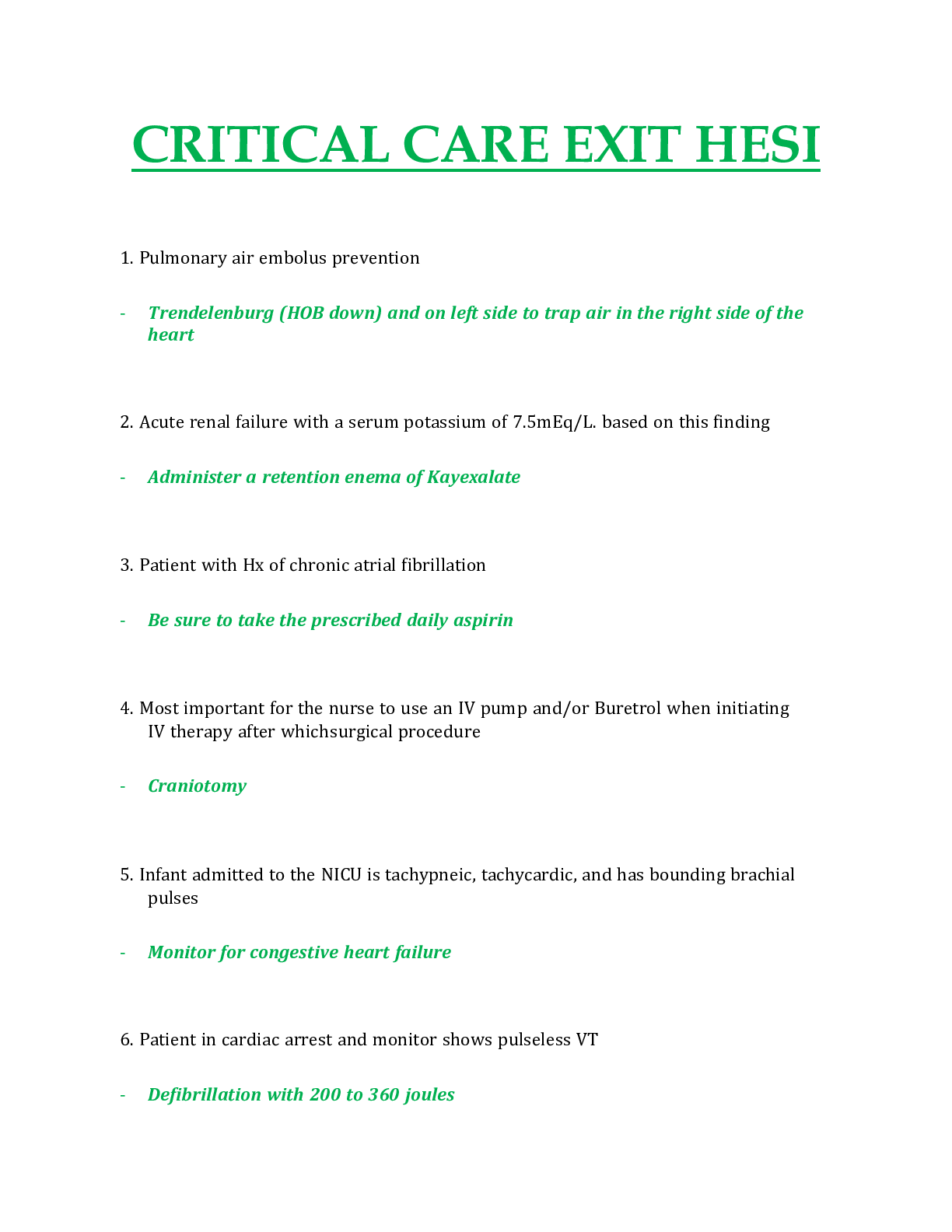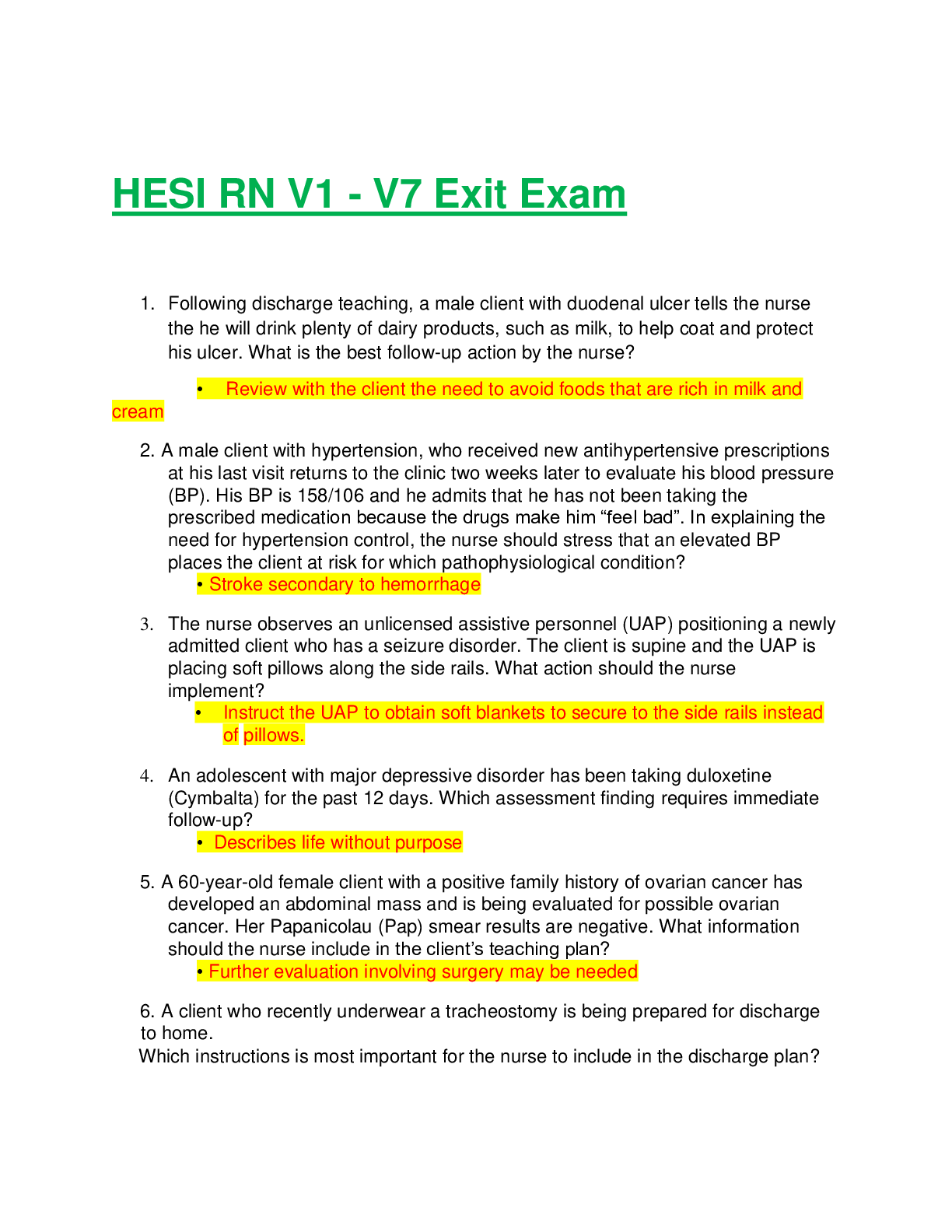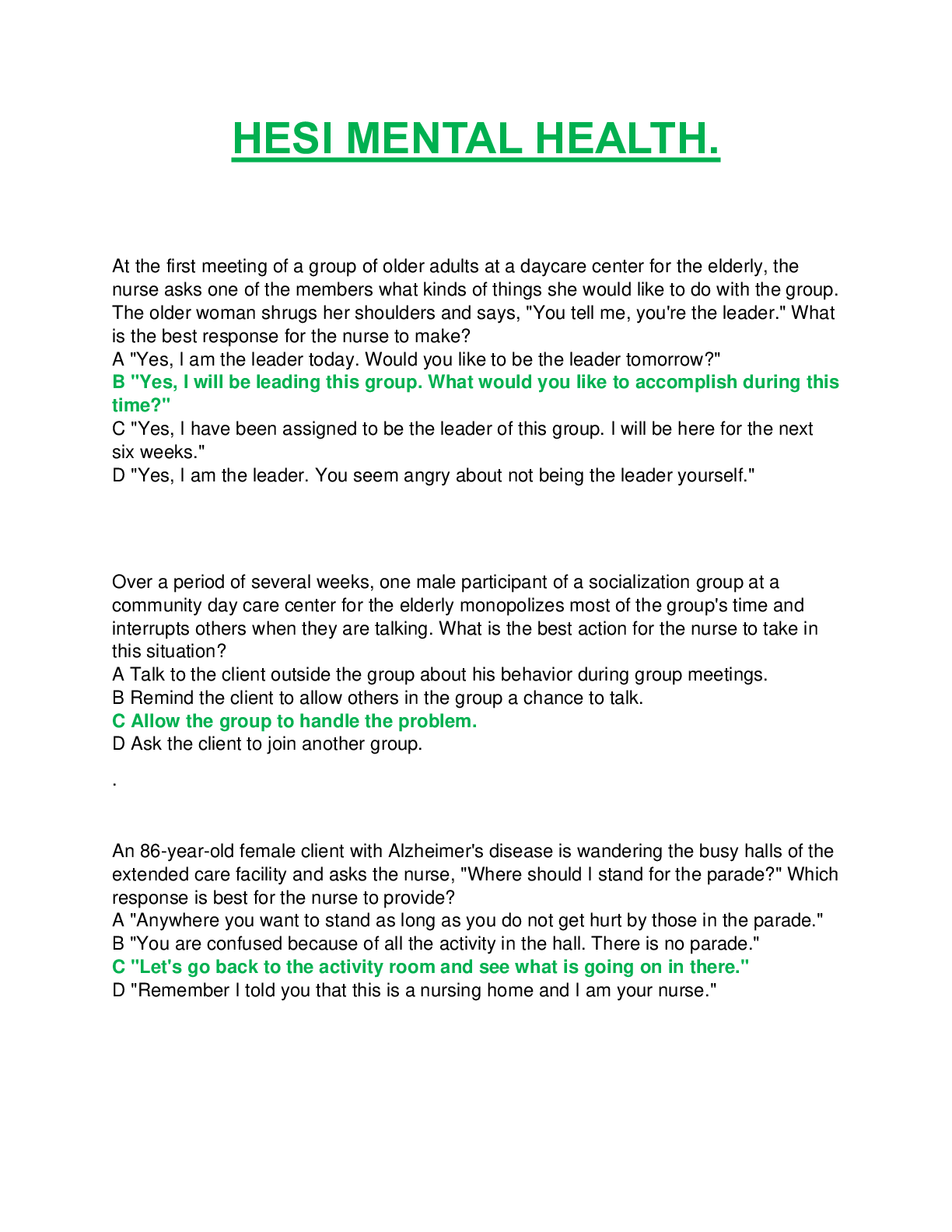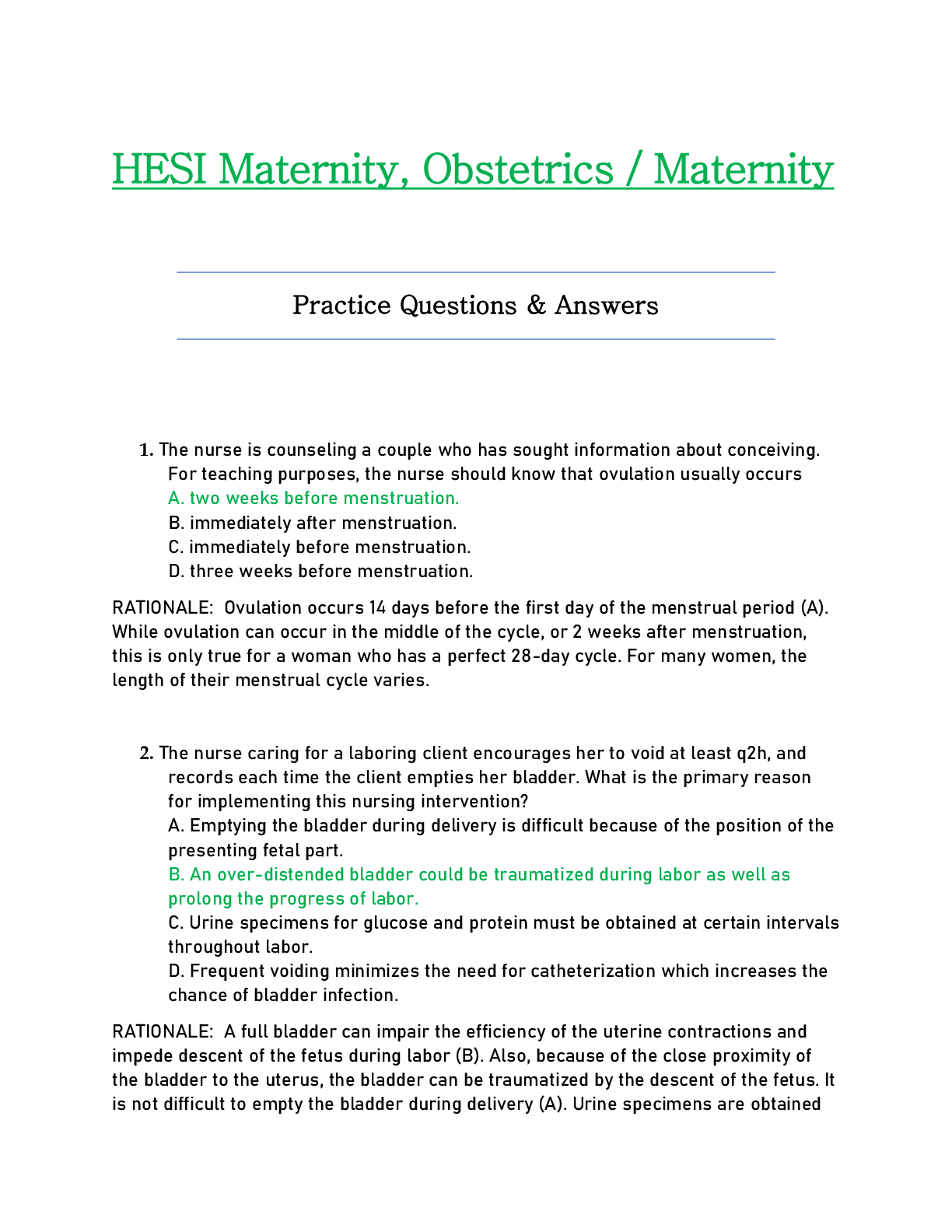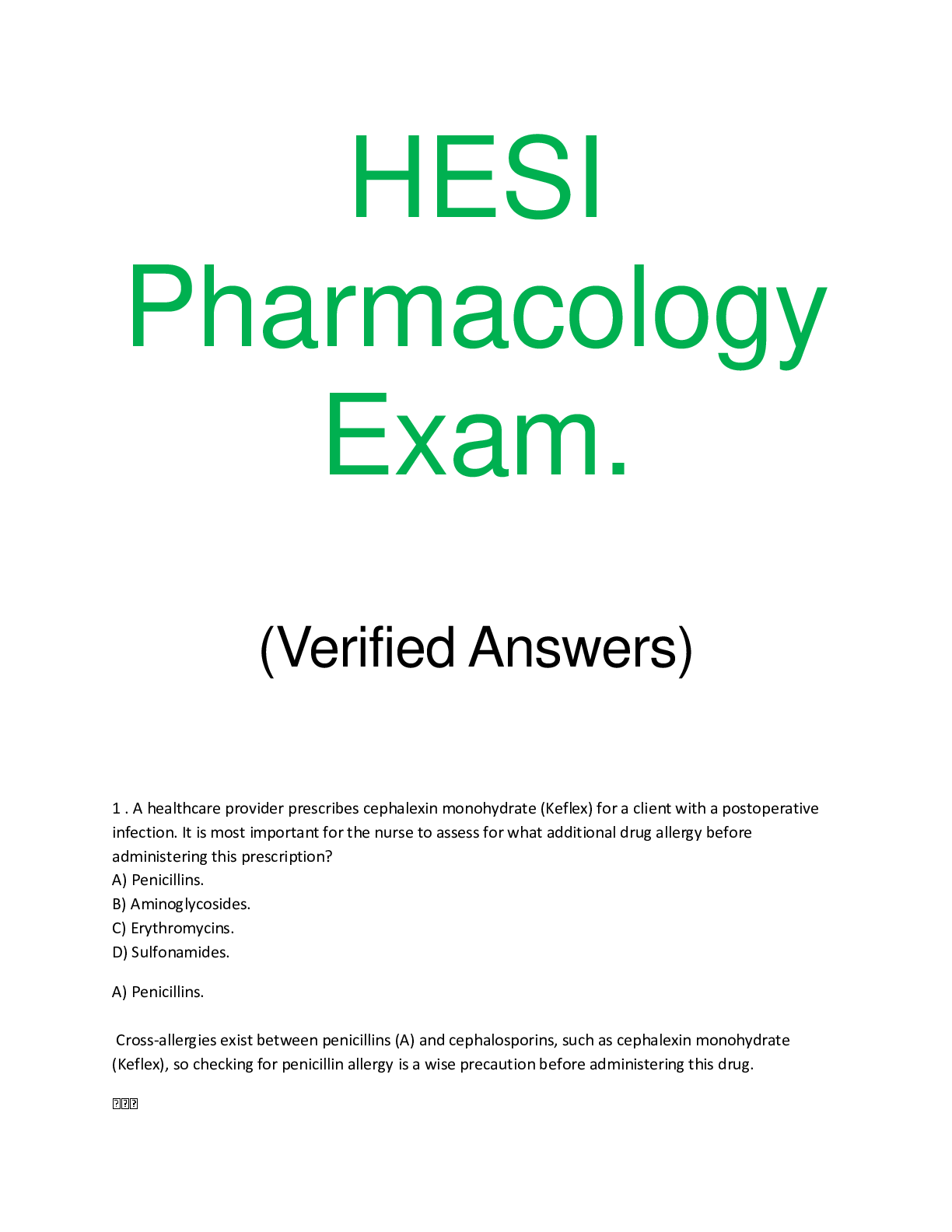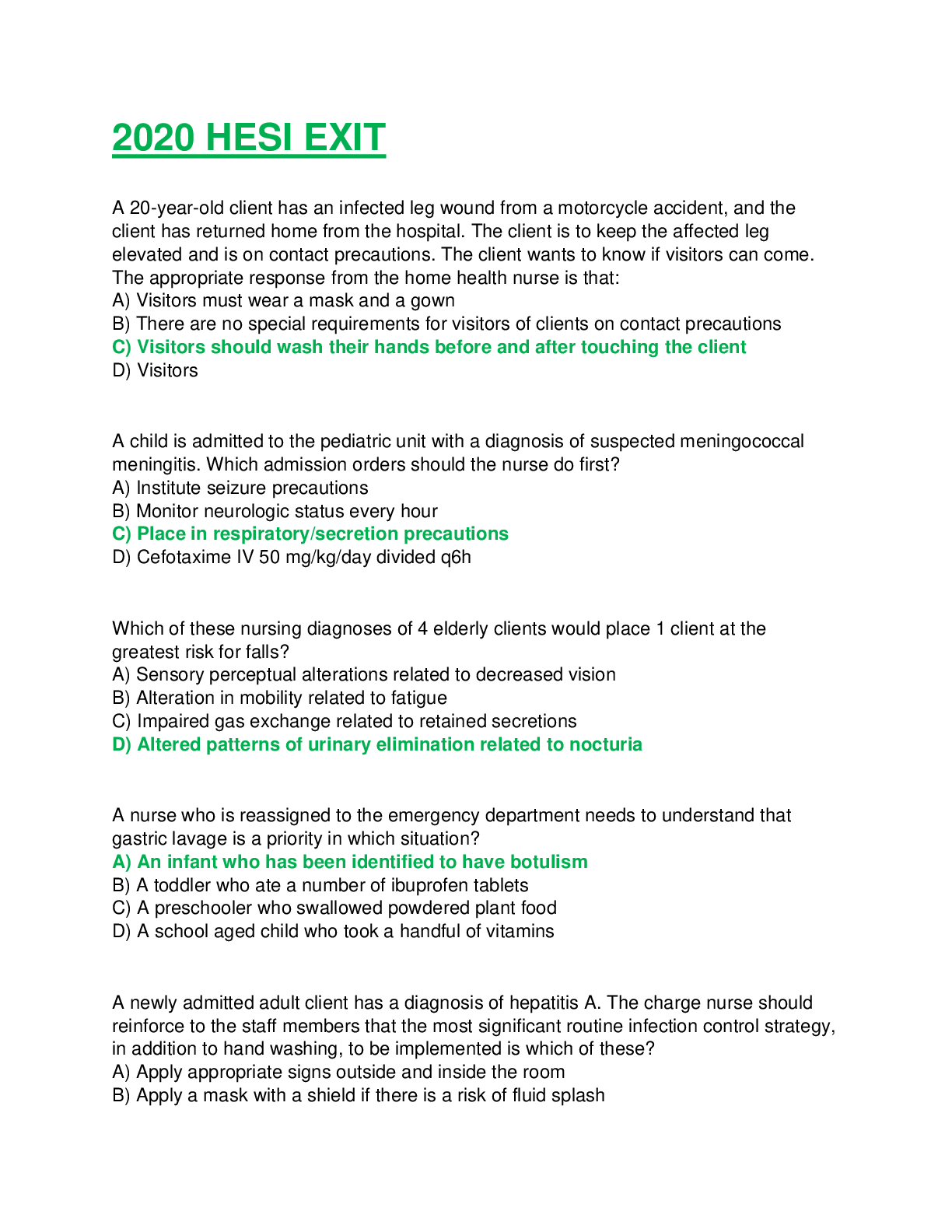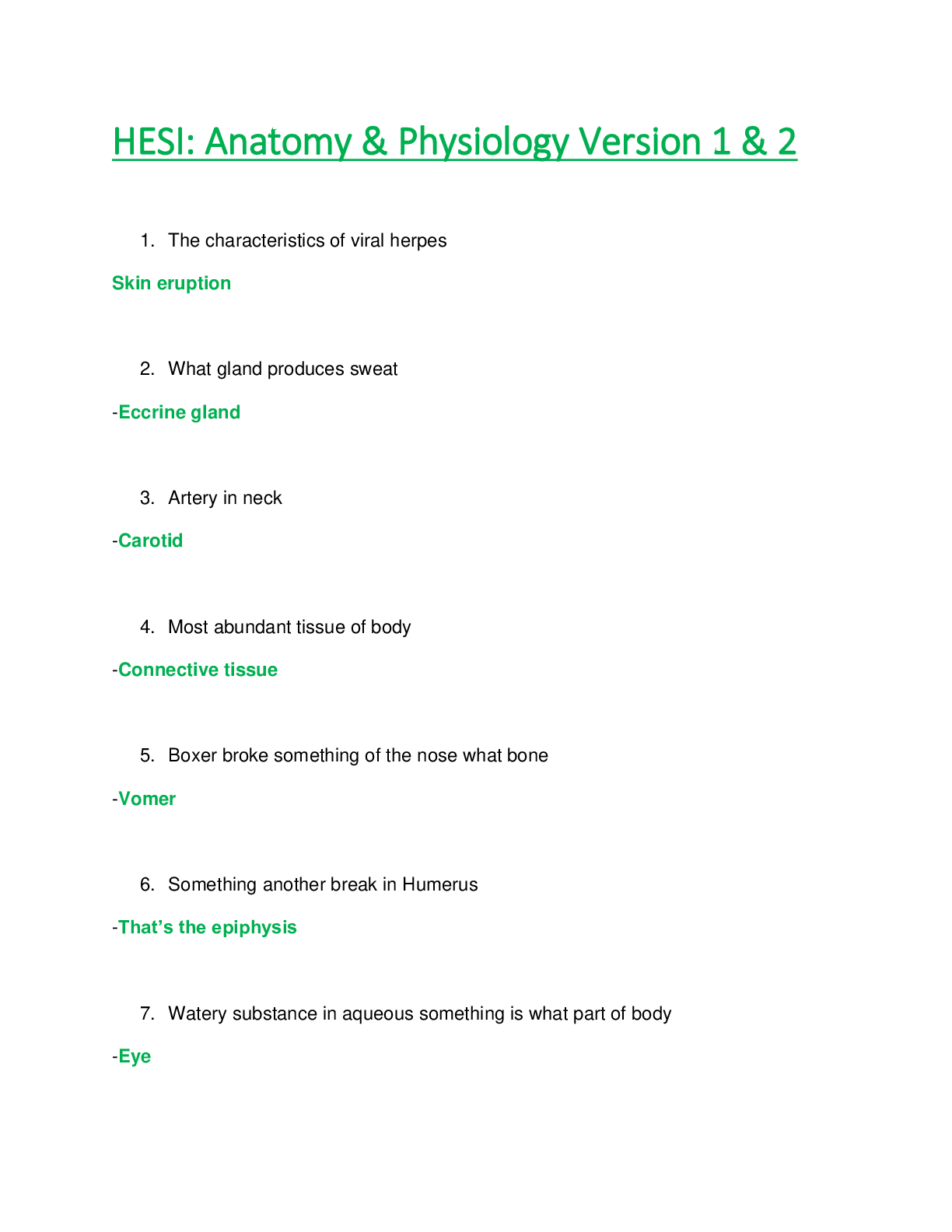HESI Maternity & Obstetrics | 150 Practice Questions & Answers
Document Content and Description Below
Hesi Maternity & Obstetrics HESI Maternity, Obstetrics / Maternity Practice Questions & Answers 1. The nurse is counseling a couple who has sought information about conceiving. For teachin... g purposes, the nurse should know that ovulation usually occurs A. two weeks before menstruation. B. immediately after menstruation. C. immediately before menstruation. D. three weeks before menstruation. RATIONALE: Ovulation occurs 14 days before the first day of the menstrual period (A). While ovulation can occur in the middle of the cycle, or 2 weeks after menstruation, this is only true for a woman who has a perfect 28-day cycle. For many women, the length of their menstrual cycle varies. 2. The nurse caring for a laboring client encourages her to void at least q2h, and records each time the client empties her bladder. What is the primary reason for implementing this nursing intervention? A. Emptying the bladder during delivery is difficult because of the position of the presenting fetal part. B. An over-distended bladder could be traumatized during labor as well as prolong the progress of labor. C. Urine specimens for glucose and protein must be obtained at certain intervals throughout labor. D. Frequent voiding minimizes the need for catheterization which increases the chance of bladder infection. RATIONALE: A full bladder can impair the efficiency of the uterine contractions and impede descent of the fetus during labor (B). Also, because of the close proximity of the bladder to the uterus, the bladder can be traumatized by the descent of the fetus. It is not difficult to empty the bladder during delivery (A). Urine specimens are obtained only by special order (C). There is danger of infection due to catheterization (D), but this is not the primary reason for encouraging the client to void during labor. 3. The nurse instructs a laboring client to use accelerated-blow breathing. The client begins to complain of tingling fingers and dizziness. What action should the nurse take? A. Administer oxygen by face mask. B. Notify the healthcare provider of the client's symptoms. C. Have the client breathe into her cupped hands. D. Check the client's blood pressure and fetal heart rate. RATIONALE: Tingling fingers and dizziness are signs of hyperventilation (blowing off too much carbon dioxide). Hyperventilation is treated by retaining carbon dioxide. This can be facilitated by breathing into a paper bag or cupped hands (C). (A) is inappropriate since the CO2 level is low, not O2 . (B and D) are not specific for this situation. [Show More]
Last updated: 3 months ago
Preview 5 out of 51 pages

Loading document previews ...
Buy this document to get the full access instantly
Instant Download Access after purchase
Buy NowInstant download
We Accept:

Reviews( 0 )
$13.00
Can't find what you want? Try our AI powered Search
Document information
Connected school, study & course
About the document
Uploaded On
Apr 18, 2021
Number of pages
51
Written in
Additional information
This document has been written for:
Uploaded
Apr 18, 2021
Downloads
0
Views
145

